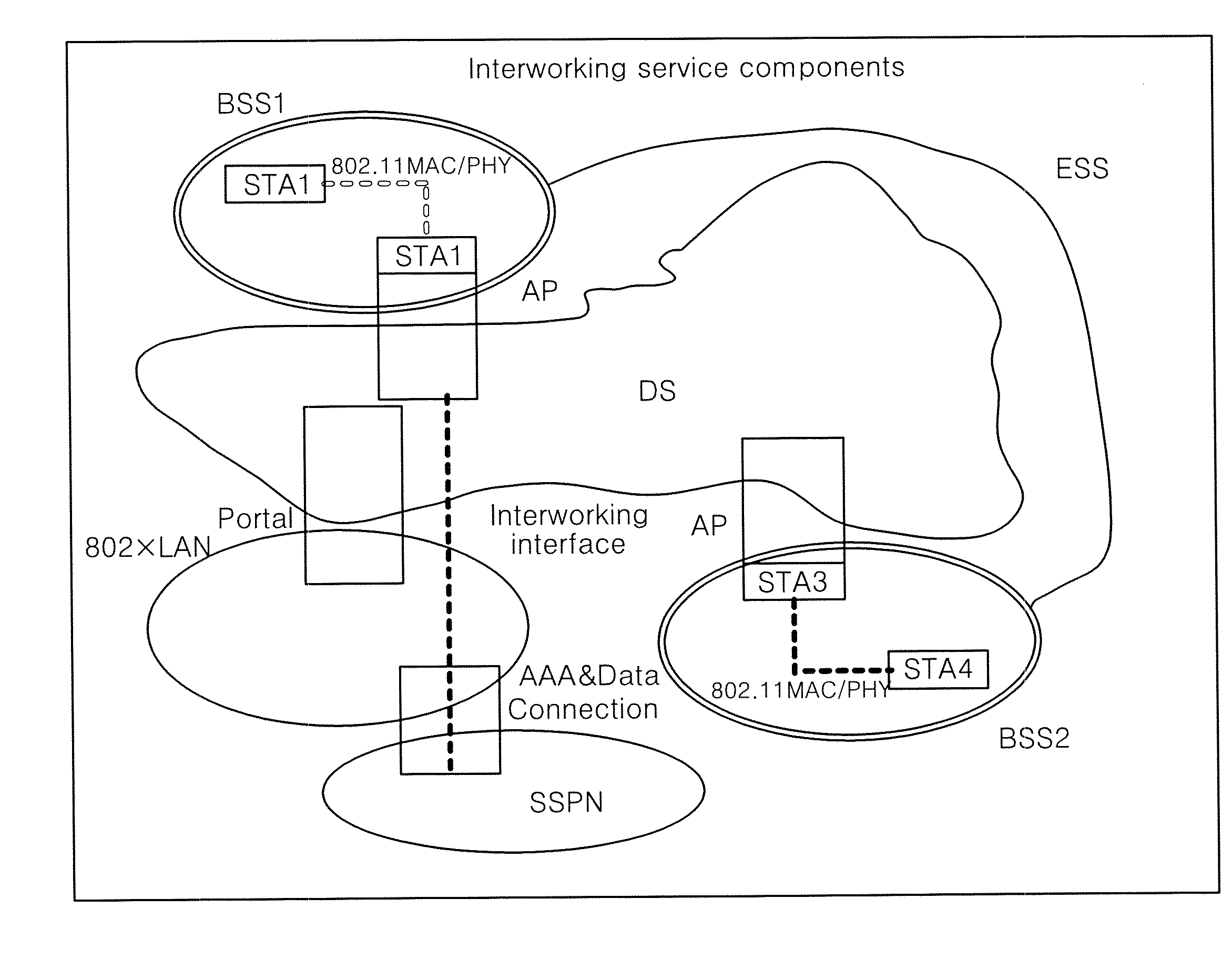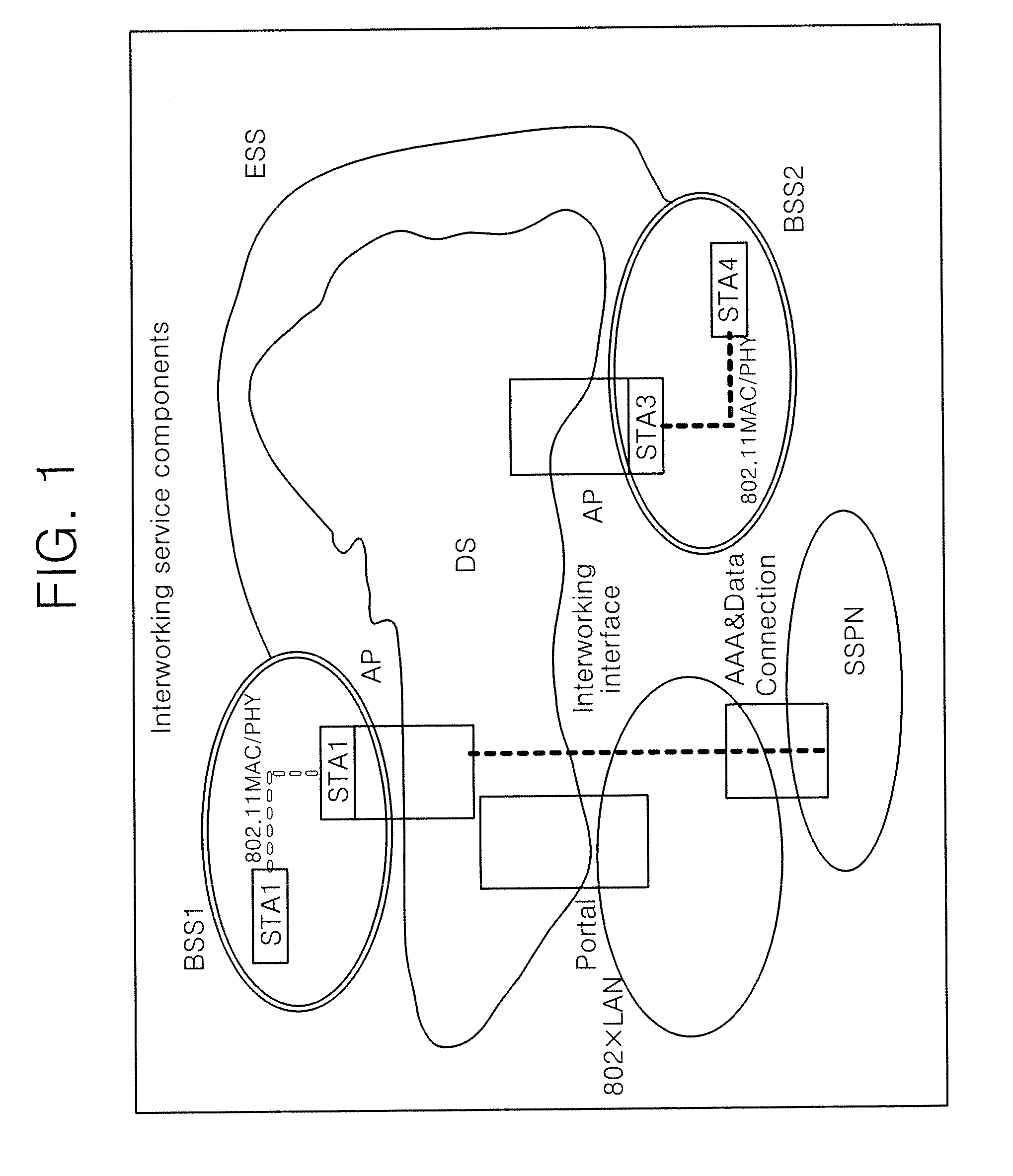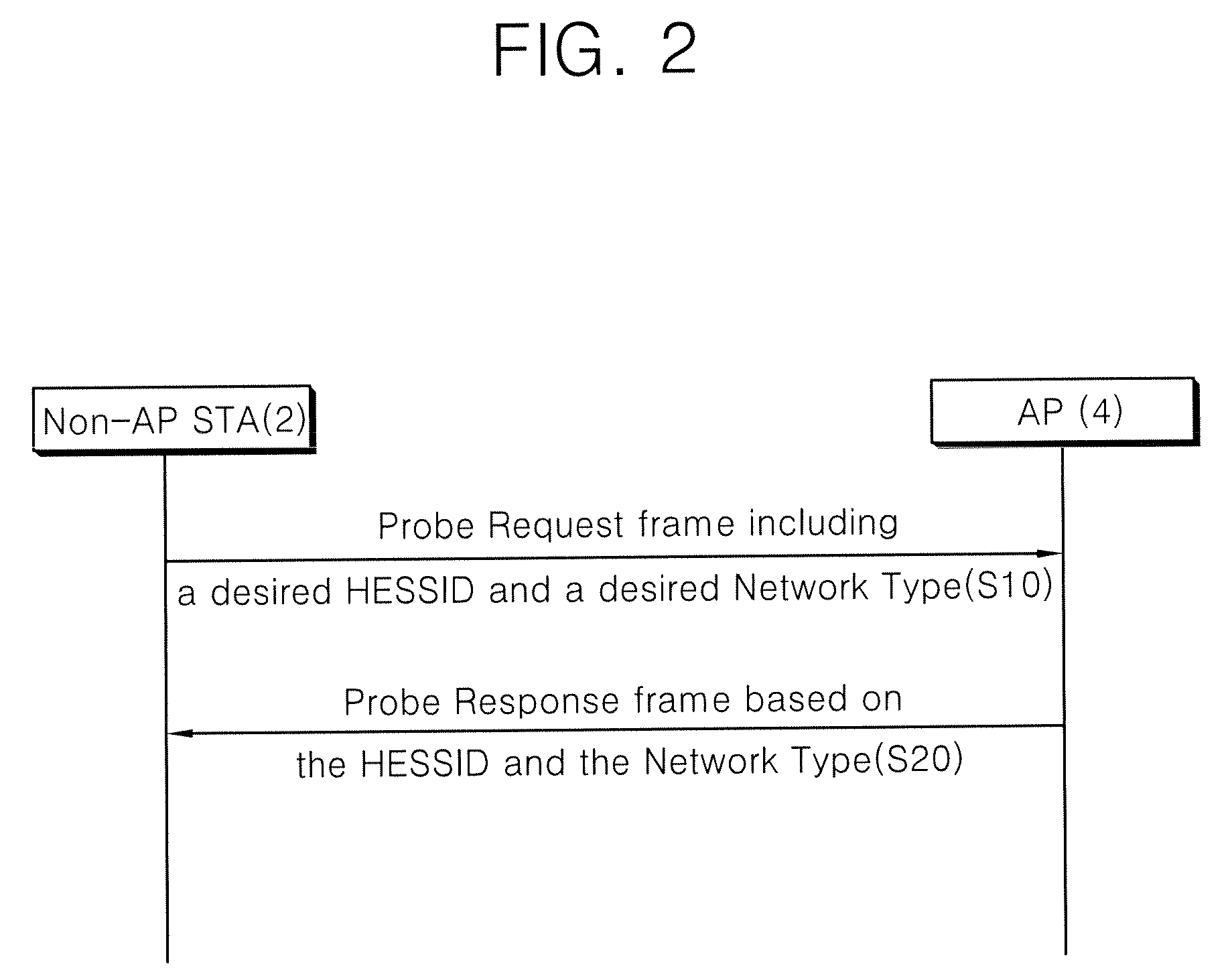Scanning procedure in wireless lan, station supporting the same, and frame format therefor
a scanning procedure and wireless lan technology, applied in the field of scanning procedures in wireless lans, can solve the problems of non-ap stas that cannot acquire sufficient information on a network from scanning procedures, and have difficulty in selecting suitable aps, etc., and achieve the effect of increasing channel traffi
- Summary
- Abstract
- Description
- Claims
- Application Information
AI Technical Summary
Benefits of technology
Problems solved by technology
Method used
Image
Examples
first embodiment
[0055]FIG. 2 is a diagram illustrating a message flow of a scanning procedure in a WLAN according to a first embodiment of the invention. The first embodiment of the invention relates to an active scanning procedure, where a non-AP STA 2 and an AP are stations supporting an interworking service, that is, interworking-capable STAs.
[0056]Referring to FIG. 2, the non-AP STA 2 transmits a probe request frame (S10). The probe request frame can be sent to a broadcast destination address or a unicast destination address. The probe request frame contains HESSID information and network type information desired by the non-AP STA 2 and may further contain desired SSID information and BSSID information.
[0057]FIG. 3 is a block diagram illustrating a format of the probe request frame. Referring to FIG. 3, the probe request frame includes a medium access control (MAC) header, a frame body, and a frame check sequence (FCS). The MAC header includes a frame control field, a duration field, a destinat...
second embodiment
[0077]A second embodiment of the invention also relates to the active scanning procedure in a wireless LAN. As described above, in the active scanning procedure, a non-AP STA transmits a probe request message having a unicast destination address or a broadcast destination address set therein and one or more APs receive the probe request message. The APs having received the probe request message check identification information elements included in the probe request message and then determines whether they should transmit a probe response message. If no relevant information is included in the received identification information, the APs do not transmit the probe response message. On the other hand, when relevant or matched information is included in the received identification information, the APs can transmit the probe response message to reduce a communication channel load in the wireless LAN.
[0078]Here, the identification information includes one or more of a service set ID (SSID)...
third embodiment
[0115]According to a third embodiment of the invention, DS information is added to the beacon frame used in a passive scanning procedure, the probe request frame used in the active scanning procedure, and / or the probe response frame. The DS information is a variety of information on the DS and can include DS type information indicating whether the DS is a wired network or a wireless network such as a mesh network or information on the maximum data transmission rate supported by the DS or the bandwidth used therein. The DS information is contained in one field or an information element (IE) of the beacon frame, the probe request frame, and / or the probe response frame, and a method of expressing the DS information is not limited at all. For example, the DS information may have a format of a bit field indicating whether it is supportable or a format indicating the maximum and / or minimum value supportable.
[0116]FIG. 17 is a block diagram illustrating a format of an interworking informat...
PUM
 Login to View More
Login to View More Abstract
Description
Claims
Application Information
 Login to View More
Login to View More - R&D
- Intellectual Property
- Life Sciences
- Materials
- Tech Scout
- Unparalleled Data Quality
- Higher Quality Content
- 60% Fewer Hallucinations
Browse by: Latest US Patents, China's latest patents, Technical Efficacy Thesaurus, Application Domain, Technology Topic, Popular Technical Reports.
© 2025 PatSnap. All rights reserved.Legal|Privacy policy|Modern Slavery Act Transparency Statement|Sitemap|About US| Contact US: help@patsnap.com



